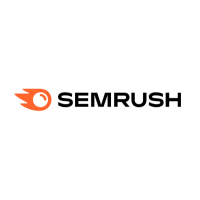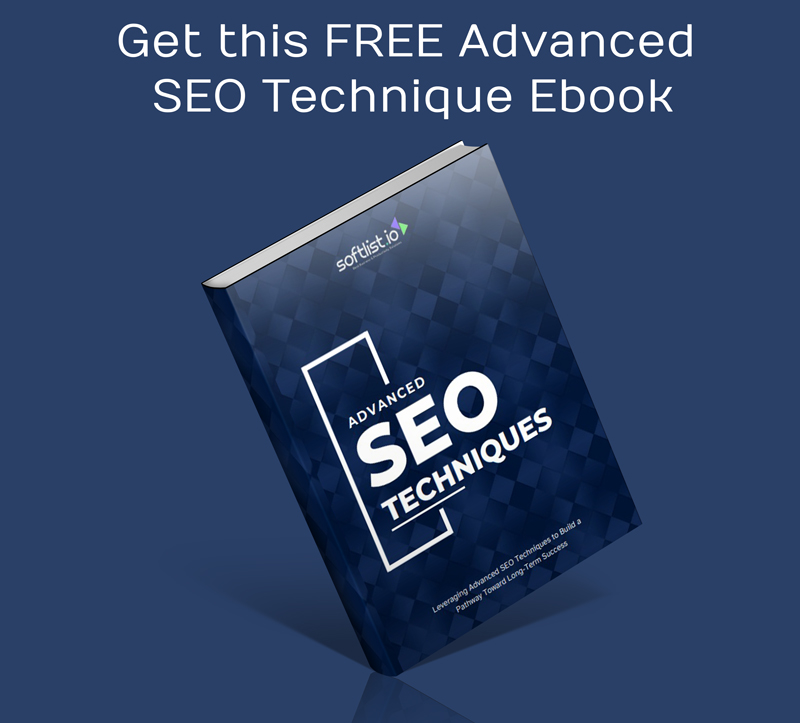Large, unoptimized images can slow down your website, hurt your SEO rankings, and drive visitors away before they can explore your content.
You should choose the best image optimization tool. Reducing file sizes isn’t enough; striking the perfect balance between quality, speed, and search engine visibility is also important. With so many options available, finding the right one can feel overwhelming.
But don’t worry. We’re here to break it down for you. In this guide, we’ll explore the top image optimization software for blogs and explain why SEMRush stands out as the ultimate solution.
Key Takeaways
- Image Optimization is Essential for SEO and User Experience: Large, unoptimized images slow down websites, negatively affecting SEO rankings and user engagement. Optimizing images helps improve site speed, enhances search visibility, and ensures a seamless browsing experience.
- Choosing the Right Image Optimization Tool Matters: The best image optimization software balances compression efficiency and quality retention while supporting various formats like WebP and AVIF. Tools with bulk optimization, automation, and integration capabilities are ideal for bloggers.
- SEMRush Offers More Than Just Image Compression: Unlike standalone compressors, SEMRush provides in-depth SEO insights, image analysis, and optimization recommendations. It integrates image optimization into a broader SEO strategy, making it a comprehensive solution for bloggers.
- Automating Image Optimization Saves Time and Enhances Performance: Features like automatic compression, alt text suggestions, and lazy loading help streamline the process. SEMRush and tools like TinyPNG and WP Smush ensure images are optimized without manual intervention.
- Optimized Images Improve Page Speed and SEO Rankings: Faster-loading images reduce bounce rates and improve search engine rankings. Using the right formats, applying lazy loading, and regularly monitoring image performance with SEMRush helps maintain a high-performing blog.
What is Image Optimization?
When you add images to your blog, they take up space and can slow down your website. Image optimization helps you compress images, reduce file size, and convert to formats like WebP or AVIF without sacrificing quality. The goal is to make your website faster while keeping images sharp.
You can optimize images by resizing, compressing, or converting them to next-gen formats like WebP and AVIF. Lossy compression reduces file size more aggressively, while lossless compression keeps every detail of the original image.
A good image optimizer can help you automatically compress your images while keeping them looking great.
Why is Image Optimization Essential for Bloggers?
When images are too large, they slow down your website’s load time. A slow website hurts user experience and can lower your SEO rankings. Faster-loading images improve your website’s speed, making pages load faster and keeping visitors engaged.
If you use WordPress, an image optimization plugin like EWWW Image Optimizer can help you compress images in bulk and optimize existing images in your media library.
With a WordPress plugin, you can automatically compress your images upon upload and convert images to WebP or AVIF for a faster website.
A faster website improves PageSpeed scores and reduces bandwidth usage, which is especially helpful if your hosting plan has limits. With an image optimizer plugin, your website loads faster without sacrificing quality.
A well-optimized blog doesn’t just load faster; it also improves PageSpeed scores, reduces bandwidth usage, and enhances mobile performance. Now, let’s break down the key features you should look for in an image optimization tool.
WordPress.com handles all the technical details to make your site fast and reliable. No plugins or tools required. Just focus on creating amazing content and leave the rest to us.
Key Features to Look for in Image Optimization Software

Source: Canva Pro
Compression Efficiency and Quality Retention
A good image optimization tool should let you compress and optimize images without making them look blurry. Look for an optimization plugin that supports both lossy compression and lossless compression so you can choose how much quality you want to keep.
Some tools let you automatically compress new image uploads, while others allow bulk optimization for existing images in your media library. This ensures that every image is optimized for faster loading times without compromising appearance.
Support for Multiple Image Formats
Your image optimizer should work with standard formats like JPEG, PNG, JPG, and GIF, as well as newer formats like WebP and AVIF. WebP images load faster than JPEG and PNG, and AVIF files are even smaller without sacrificing quality.
Some tools also support HEIC, which is used on Apple devices and can convert images to WebP for better performance across all browsers. Make sure the software you choose allows WebP conversion and supports multiple formats.
Bulk Optimization Capabilities
If you already have a lot of unoptimized images on your blog, you need a tool that can compress images in bulk. A good image optimizer plugin should help you optimize your images across your entire website, including newly uploaded pictures and old files.
Look for software that works seamlessly in the background, automatically optimizing every image without extra effort. Some tools also let you compress new image uploads in real-time, reducing the file size without manually making changes.
Integration with Blogging Platforms
If you use WordPress, a WordPress image optimization plugin is the easiest way to manage your images. Plugins like EWWW Image Optimizer or EWWW IO allow you to compress images automatically and convert them to WebP for a faster website.
Some optimization tools also offer an API, which lets you integrate image compression into your workflow, even if you’re not using a WordPress plugin. This is useful if you run a blog on a different platform but want to speed up your website.
SEO Features for Image Optimization
Optimized images improve your SEO by making your website load faster. A good image optimization plugin should also help with image SEO by allowing you to add alt text and metadata.
Some tools even use AI to suggest improvements, like resizing large images or converting PNGs to WebP for better performance. If you’re serious about ranking higher on Google, choose an image optimizer that improves speed and SEO.
Cloud-Based vs. Local Software
Some image optimization tools work online and store optimized images on a CDN, while others run directly on your website. A CDN speeds up image delivery by loading images from the nearest server, reducing page load times.
If you want a great plugin that doesn’t slow down your server, look for a cloud-based tool. If you prefer to manage everything yourself, a local optimization plugin might be better.
With these key features in mind, let’s dive into why SEMRush is the best image optimization software for bloggers.
Why SEMRush is the Best Image Optimization Software for Bloggers

Source: Canva Pro
SEMRush’s Unique Image Optimization Capabilities
It is important for any blog to keep image quality high while reducing image size. SEMRush helps you optimize image files without losing sharpness. The optimization process focuses on speed optimization, making your website load faster without sacrificing detail.
With SEMRush, you can automatically compress and convert images to WebP format, reducing file size without making them blurry. The tool handles multiple versions of your images, so you always have optimized and high-quality backups.
Comprehensive SEO and Image Analysis in One Tool
Optimizing images is just one part of improving your website. SEMRush provides a complete speed optimization and SEO toolkit, helping you rank higher on search engines.
The platform analyzes your images and suggests improvements to help with size without sacrificing quality.
Unlike basic online image compressors, SEMRush provides detailed insights into how image size affects page speed. It also recommends making your images faster, including format changes and compression adjustments.
Seamless Integration with Content Marketing Strategies
Image optimization should fit into your overall content strategy. SEMRush optimizes your image files alongside your blog posts, keywords, and SEO efforts. The tool works with different platforms, ensuring you don’t need multiple services to manage your content and images.
If your blog requires frequent image uploads, SEMRush helps you automate the optimization process so you don’t have to compress each image manually.
Cost-Effectiveness and Added Benefits
Choosing the right tool means balancing performance and price. SEMRush offers a free trial, so you can test its advanced image optimization features before committing.
Unlike standalone image compressors, SEMRush provides more than just compression; it improves your website’s SEO.
The platform also offers compression API integration, allowing you to automate image compression if you need bulk optimization. Customer support is available to help you make the most of the tool.
Now that you know why SEMRush is the best option, let’s walk through how to use it for image optimization.
Manage SEO, content marketing, competitor research, PPC, and social media marketing all from a single platform for streamlined efficiency and effective results.
How to Use SEMRush for Image Optimization

Source: Canva Pro
Step 1: Run a Site Audit to Find Image Issues
First, log in to your SEMRush account and run a Site Audit. This tool scans your website for SEO issues, including image-related ones. It’ll highlight:
- Large image file sizes are slowing down your site
- Missing alt text (important for accessibility and SEO)
- Broken images that need fixing
To run the audit, go to Site Audit under the SEO Toolkit, enter your website URL, and let SEMRush do it.
Step 2: Compress and Resize Images
One of the most significant issues with SEMRush flags is the large image sizes. If your images are too big, your site will load slowly, which hurts SEO and user experience. SEMRush recommends reducing file sizes without losing quality.
Use tools like TinyPNG, ShortPixel, or Photoshop to compress images before uploading them.
Step 3: Add Alt Text and Descriptive Filenames
SEMRush also points out images missing alt text, a short description of the image that helps search engines understand what it’s about. This is super important for SEO and accessibility.
- Instead of naming an image IMG1234.jpg, rename it chocolate-cake-recipe.jpg (if it’s a picture of a chocolate cake, of course).
- Add alt text like: “A homemade chocolate cake topped with fresh strawberries.”
You can check for missing alt text in the On-Page SEO Checker or your Site Audit report.
Step 4: Use the Right Image Format
SEMRush might suggest switching image formats to improve loading speed. Here’s a quick guide:
- JPEG – Best for photos with lots of colors
- PNG – Best for transparent backgrounds
- WebP – Best for fast-loading, great-quality images (Google loves this format!)
Consider converting your images to WebP using tools like Squoosh or CloudConvert if your pictures are in older formats.
Step 5: Implement Lazy Loading
Lazy loading is a technique that loads images only when they appear on a user’s screen. This makes your pages load much faster. SEMRush may recommend enabling lazy loading if your images are slowing things down.
If you’re using WordPress, plugins like WP Rocket or Lazy Load by WP Rocket can easily handle this.
Step 6: Monitor and Improve Regularly
SEO isn’t a one-time thing. Regularly check SEMRush’s Site Audit to catch and fix new image-related issues.
Wrapping Up
Choosing the right image optimization software for your blog can make all the difference in site speed, SEO performance, and user experience. While there are many options, SEMRush is the best choice, offering powerful features beyond simple compression.
With its advanced SEO insights, seamless integration, and top-tier optimization tools, you get a complete package to enhance your blog’s visuals without compromising performance.
Want to stay updated on the best deals? Get deals and promotions by subscribing to our website, and never miss out on exclusive offers for top blogging tools.
Looking for more ways to boost your SEO game? Check out our Top 10 SEO Tools Software review to find the tools to take your blog’s search rankings to the next level!
Frequently Asked Questions
How Can I Automate Image Optimization For My Blog?
Tools like SEMRush, WP Smush, or TinyPNG allow automatic compression, format conversion, and SEO enhancements for every uploaded image.
Does SEMRush Offer Bulk Image Optimization?
Yes, SEMRush’s Site Audit tool can analyze multiple images, provide optimization suggestions, and help improve overall site performance.
What Image Formats Are Best For Blog Optimization?
WebP is the most efficient format, offering high-quality compression. PNG is ideal for transparency, while JPEG works well for high-resolution images with smaller file sizes.
Can Image Optimization Improve SEO Rankings?
Yes, optimized images reduce page load times, a key ranking factor. Additionally, using relevant alt text and structured data improves discoverability in image search results.
How Does Image Optimization Affect Website Speed?
Large images slow down page load times, negatively affecting user experience and SEO. Properly optimized images enhance speed, leading to better rankings and reduced bounce rates.










